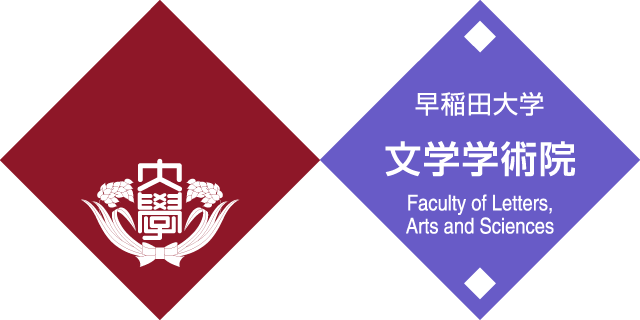- News
- Event Report: Let’s Make a Temple Together, Kamakura-Period Carpenters! On Worksite Portrayals in Early Medieval Illustrated Narratives
Event Report: Let’s Make a Temple Together, Kamakura-Period Carpenters! On Worksite Portrayals in Early Medieval Illustrated Narratives
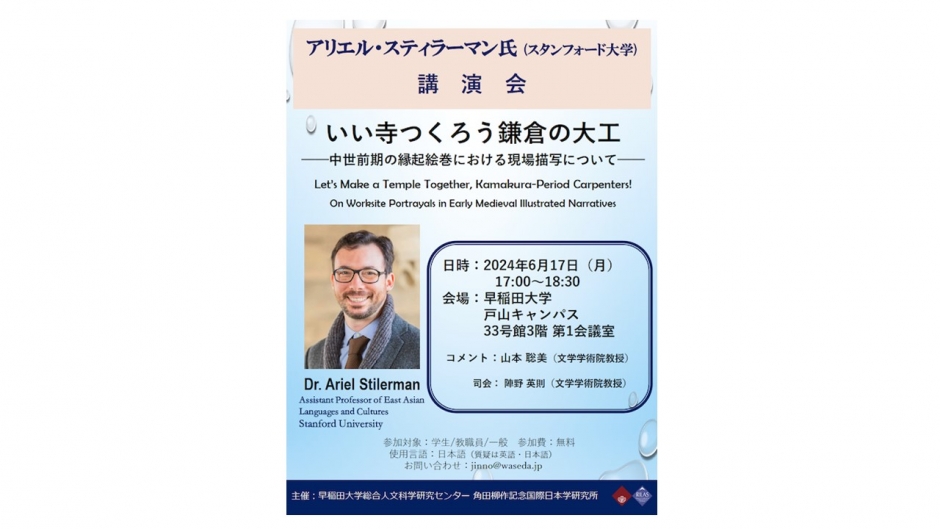
Dates
Add to calendar0617
MON 2024- Place
- 早稲田大学戸山キャンパス33号館第1会議室
- Time
- 17:00-18:30
- Posted
- 2024年7月23日(火)
Ariel Stilerman (Stanford University) is currently focusing on both text and pictures in medieval Japanese temple and shrine engi emaki (picture scrolls) to decipher the changes in life, knowledge, and technology of the time, and to explore how new shared cultural networks were constructed from them.
In this lecture, he discussed scenes related to the architecture of temples and shrines in six picture scrolls from the Kamakura-Period: Taima mandara engi emaki, Kasuga gongen genki e, Tōsei eden, Hōnen shōnin eden, Ishiyamadera engi emaki, and Matsuzaki tenjin engi (in the order mentioned in the lecture). First of all, he elaborately explained that most of the descriptions of the construction in the respective texts are rather brief, whereas, in the paintings, many people involved in the construction work, including carpenters and craftsmen, are depicted in a concrete and realistic manner, and the most advanced tools in the Kamakura-Period are also depicted in a very precise manner. From these facts, the lecturer made inferences about the elites who commissioned the construction of temples and shrines, the carpenters and other craftsmen involved in the construction work, and the relationship between these craftsmen and the painters. In addition, he showed with examples that some paintings are based on concrete observations of the site, while others are modeled on prior picture scrolls without looking at the site.
In response to these lectures, Satomi Yamamoto (Waseda University), a specialist in the history of Japanese medieval paintings, made the following three points as a commentator. First, it was not until the Kamakura-Period that construction sites were depicted in engi emaki, and such a turning point in expression could be an expression of awe at the fact: ancient temples were recreated after the war in the late 12th century and the reconstruction of the southern capital was done by the work of human hands. Second, the role played by the emaki medium is important, and that historical criticism is essential to the theory of pictorial archives. Third, what kind of gaze is reflected on these picture scrolls? In other words, if they reflect the perception of reality from the viewpoint of the client at the higher level, it is necessary to assume the filter of “a desirable craftsmen as seen from the client’s viewpoint” for capturing the common people.
Next, after an exchange between the lecturer and commentator, the floor was filled with lively questions on a wide range of topics, including the relationship with waka poetry, the connection with the study of human behavior, and the understanding of the hierarchy of people in the Middle Ages.
(Written by Hidenori Jinno)
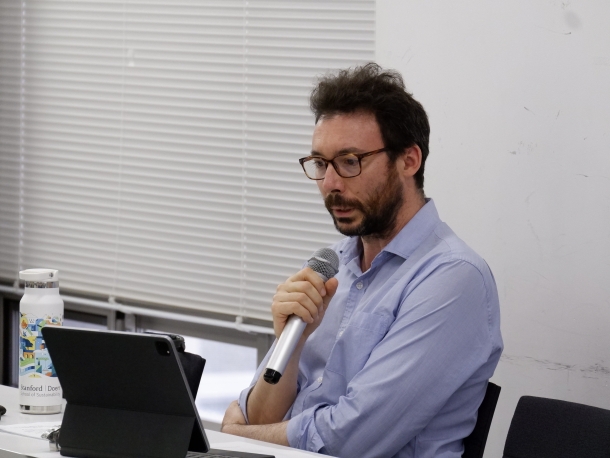

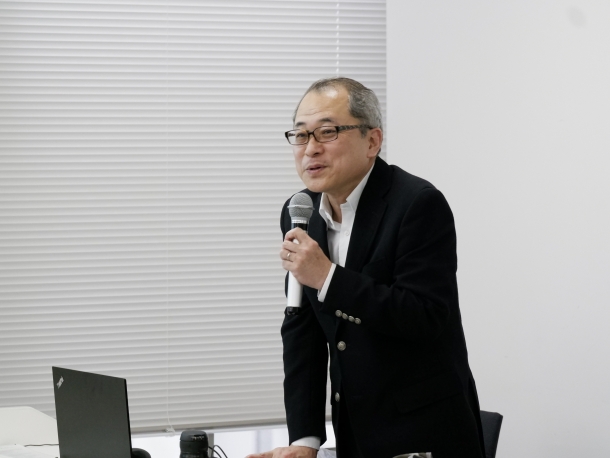

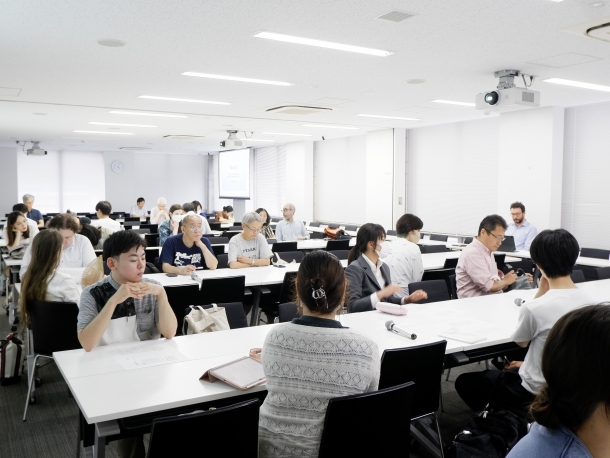
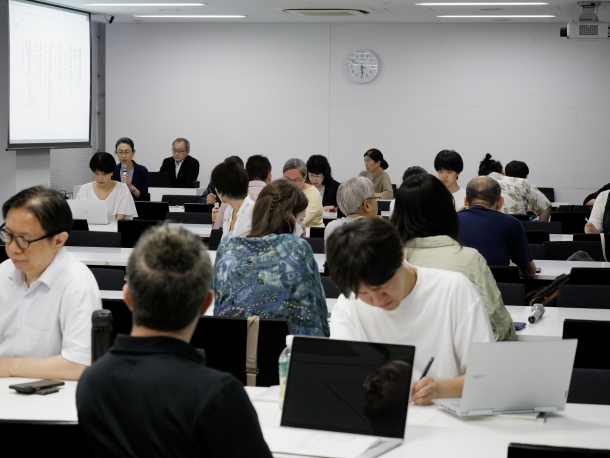
Event Overview
- Date and Time:June 17, 2024, 17:00-18:30(JST)
- Format:Face to face
- Venue:Conference Rm. 1, Bldg. 33, 3rd Fl., Toyama Campus
- Lecturer:Ariel Stilerman(Assistant Professora at Stanford University)
- Subject Title:Let’s Make a Temple Together, Kamakura-Period Carpenters! On Worksite Portrayals in Early Medieval Illustrated Narratives
- Commentator:Satomi Yamamoto(Professor at Waseda University)
- Moderater:Hidenori Jinno(Professor at Waseda University)
- Number of Participants:38 (Students, Faculty 27、Public 11)
- Sponsored by:Ryusaku Tsunoda Center of Japanese Culture
- Tags
- Event Reports
